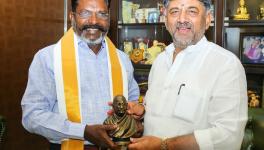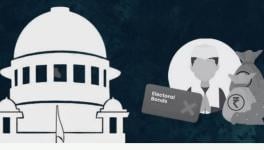History of The Power of Promise: Examining Nuclear Energy in India
A change of regime is often dangerous. After 1947, the Congress party had ruled the country for the most part.
This partly explained why there had been continuity in both nuclear energy and weapons policies. The continuity in the latter realm changed drastically in 1998 when the Bharatiya Janata Party (BJP) came to power. Weeks after coming to power, the new government conducted five nuclear tests vitiating peace and security in South Asia.
This was a godsend for the DAE [Department of Atomic Energy] which had been under some attack because it had failed to deliver on its projections of thousands of megawatts. Ever since 1974, it had lobbied, unsuccessfully thus far, to conduct further nuclear tests and expand the country’s nuclear arsenal. With the tests, it could fully establish its credentials as the organization that built the ‘ultimate weapon’ for the country.
Delivering bangs did produce the bucks. Over the decades, practically all governments have favoured nuclear energy and the DAE’s budgets have always been high. The only period when the DAE did not get all that it asked for and therefore considered ‘a period of total dryness and stagnation’ were the early 1990s, a period marked by cutbacks on government spending as part of economic liberalization.
But this trend was reversed with the 1998 nuclear weapons tests and the DAE’s budget increased from Rs 19.96 billion in 1997–98 to Rs 37.38 billion in 2003–04. The trend persisted even after the BJP lost power and the Congress won the 2004 elections. Budget allocations increased continuously, with the sole exception of the 2007–08 Budget, and reached Rs 81.57 billion in 2010–11 according to the annual expenditure budgets of the Government of India. Its proposed budget for 2011–12, the latest at the time of writing, was Rs 93.52 billion; this figure is the net expenditure budget, after accounting for all the revenues the DAE expected to receive. In comparison, the proposed 2011–12 Budget of the ministry of new and renewable energy was Rs 12.12 billion, offering testimony to the government’s priorities. To put that in perspective, according to the Central Electricity Authority, as of 29 February 2012, the total generating capacity of renewable energy projects was 22,233 MW whereas the installed capacity of nuclear power was 4780 MW. [Footnote: Renewable energy sources typically operate for much smaller fractions of the year compared to nuclear power and so their share of actual energy generated would be smaller than their share of generating capacity.]
With so much money being poured in, the DAE could not continue to bask in the explosive limelight for too long. In any case, just focusing on the production of nuclear weapons would not help the DAE. As discussed in the introduction, the DAE’s institutional power came, and comes, from a unique combination of abilities: it was, and is, the only entity that can claim to address both the goals that the State desires in order to establish its legitimacy, namely, military security and development. The 1998 nuclear tests were supposed to address the first goal, and indeed they did so in the eyes of much of the political elite. Therefore it was time—the DAE seemed to have decided—to move back to harping on future nuclear power potential. It now had a new target with a nice rhythmic ring: 20,000 MW by 2020. But there was a problem. Not even in its unbounded optimism could it envision doing this on its own. Therefore, in September 1998, a few months after the nuclear tests, R. Chidambaram, the AEC chairman, talked at the IAEA [International Atomic Energy Agency] of ‘procurement of LWRs [light water reactors] from friendly countries’…
The US–India nuclear deal prompted yet another round of extravagant claims about the importance of nuclear power for the nation’s development. Cabinet Minister for Power Sushilkumar Shinde said in an official statement, ‘the U.S. will help us add 40,000 MW of nuclear power by the year 2020,’ adding, ‘this will go a long way in addressing our energy deficit and will give an impetus to the country’s economic growth and sustainable development’. The US–India Business Council,
an organization that must have been salivating at the prospect of some of its members partaking of a significant fraction of reactor sales and related commerce, estimated the cost that would be incurred at US$ 100 billion or about Rs 5 trillion. There were no details about what assumptions go into this figure and it is entirely possible that this was exaggerated in order to convince US legislators to approve various changes in US law in order to allow for nuclear trade with India. Nevertheless, this figure is over fifty times the DAE’s budget for 2011–12 of about Rs 93 billion. If even a fraction of the claims of those pushing the nuclear deal were to come true, the costs would be astronomical.
True to its style, the DAE looked even further and higher. DAE Secretary Anil Kakodkar now predicted that nuclear power would constitute not 20 per cent but 35 per cent of electricity generation capacity in 2050. This was in effect echoed by Prime Minister Manmohan Singh who announced that India would have 470 GW of nuclear power by mid-century, more than a hundred times the nuclear capacity that existed at the time of the announcement.
This chapter has tried to offer a retrospective perspective on the nuclear establishment’s quest to generate large amounts of nuclear electricity in India. Despite generous government funding for decades, this has not happened. However, the immense political power wielded by the DAE and the desire on the part of decision-makers to transform India into a nuclear power—in all its meanings—implies that prospects remain high for continued high level political support for the DAE’s grandiose aims. But, as in the past, political support alone cannot result in a rapid expansion of nuclear power, certainly not on the scale that the DAE has projected and political leaders have echoed. Nuclear power around the world has been marked by failures, though seldom on the scale of the DAE’s failures. The continued expectation that nuclear power will, some day, energize the country in a substantial fashion is well captured by what Fitzgerald says about the eponymous hero of The Great Gatsby:
Gatsby believed in the green light, the orgiastic future that year by year recedes before us. It eluded us then, but that’s no matter—tomorrow we will run faster, stretch out our arms farther . . . And one fine morning—So we beat on, boats against the current, borne back ceaselessly into the past.
This is an Excerpt from Chapter 1: 1998 and Beyond, Penguin Books
M. V. Ramana is a physicist by training and is currently with the Nuclear Futures Laboratory and the Program on Science and Global Security, Princeton University. He is the author of The Power of Promise: Examining Nuclear Energy in India (Viking Penguin, December 2012). He is a member of the International Panel on Fissile Materials and the Science and Security Board of the Bulletin of the Atomic Scientists.
The views expressed here are the author's personal views, and do not necessarily represent the views of Newsclick
Get the latest reports & analysis with people's perspective on Protests, movements & deep analytical videos, discussions of the current affairs in your Telegram app. Subscribe to NewsClick's Telegram channel & get Real-Time updates on stories, as they get published on our website.

























